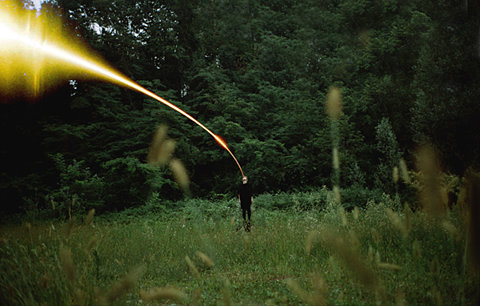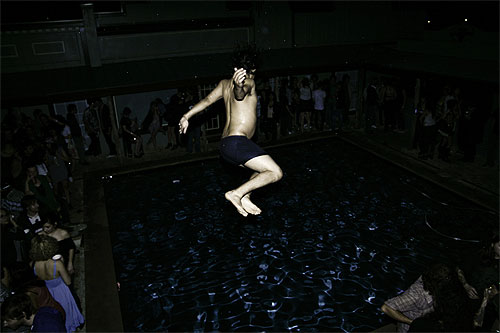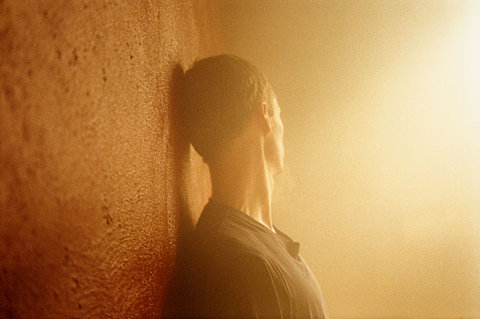This paper was read as the beginning of my MFA ‘defense’ at York University in Toronto.
Research
Perhaps inevitably, after all these years living in the universe of my computer, I am struck by the gravitational pull of my new home, this university. One of the ways it seeks to replicate itself, like any good virus, is through language, itself a social viral activity. It’s hard not to be struck, for instance, by the acronymization of language — fyi I’m an mfa with a ¼ ta omg. All those dreaded English words no longer need to be spoken, like the name of God in the Jewish religion.
I’ve been here for about a year and a half now, and over and over again I’ve heard the work that I do, and the work that others around me do, re-described as research. It’s also a word that SSRC uses, not incidentally. And it made me wonder: what is research? Re, the prefix, has a Latin derivation, and it means to do something again, it signifies a backwards motion. It’s a tone in music, and also an acronym for Real Estate, Reformed Episcopal, Religious Education, Right Excellent and Royal Engineers. It also has something to do with regarding, in regard to, concerning. It’s a word that is also a pointer.
Re: this thesis. re: this defense.
Searching
And then there is searching. Re: searching. I guess I must have lost something, why else would I be looking for it? Why else would I be searching? And I haven’t only lost it once, I seem to lose it again and again, and this prompts: a re-searching. The backward movement that is the forward movement. It’s a kind of music, a kind of real estate. I think this is a beautiful challenge: how can I lose something again and again? Maybe I never had it in the first place. How do I do my research?
In my thesis, I have been asked to spare a few words about my practice. What does your practice look like in language, as a heap, as Beckett liked to call it, a heap of words?
Line
Like the others in my cohort, I have come here with my research, my attempts at being lost over and over again, and in order to help this along I have been asked to take a course. There has been a course set out for me, a course laid out for us, and this required course is the graduate seminar. Like the return in research, it happens not once, but twice. The dominant form of the grad seminar is the artist’s talk. In the artist’s talk the artist gives an account of themselves, of their work, their methods. It’s not entirely dissimilar to what might happen in rooms like this, rooms dedicated to defenses and theses. I’ve heard a lot of artists talks in my time here in the course that has been set out for us, and I feel that many of them share a common geometry. The traditional artist talk, even if the work is untraditional, the traditions of the untraditional then, is chronological. It begins at the beginning, or a beginning, and it ends at the end, which is now. The geometrical figure, the common geometry, is a straight line, actually it’s a timeline, and on that timeline the artist hangs their work, one after another. It’s not a rule, it doesn’t happen every time, but very often the geometry of the grad seminar, the geometry of the artist’s talk, the geometry of the course is a straight line.
Circling
So as someone who is dedicated to research, I am compelled to ask: is the geometry of my research a straight line? Does it proceed from one point to the next in a chronology? How I wish that it did. There are for instance large financial rewards for someone who has the gift of prophecy, like Alfred Hitchcock’s famous storyboards, who can lay out exactly what they are going to do before they actually do it. But whenever I try to do this I fail, and this failing, or let’s be more generous and call it: making an approach – when I make an approach something is always left behind, left out, something doesn’t work, and so another approach needs to be made. And then another, and another. The geometrical figure that describes my artmaking is not a straight line but a continual looping back and starting over. The figure is a circle in motion, a circling, what the Zen folks would name an enzo.
In other words there is a division between the artist talk which may be thought of as a straight line, and an artist’s practice which may be thought of as an always moving circling. Line versus circle, noun versus verb. I have seen my comrades struggle mightily with this division. Because one of the necessary components of practice is that it is unfinished. I remember my friend Tom, a genius painter from the Slade who painted day and night for two decades until one day he approached the canvas and made a single slash across the rectangle. Huge painting. He didn’t eat or sleep for seven days, but stayed in the studio. He studied the painting in every kind of light, and when at last he felt that he couldn’t add or subtract anything from the first originary gesture, that it was optimal, that the painting was fine exactly the way it is, he cleaned his brushes and closed up his studio and he never painted again. The painting was finished, and he was finished as a painter. There was nothing more to do, nothing more for him to research, to get lost in. Or that’s the story he told himself.
Perhaps our stories, the stories we cherish and hold dear or even the stories we like to punish ourselves with, have a deep relationship to practice. And perhaps some of us have come to school not to learn more stories, but to untie the knots of some of our old, pesky and persistent tales. It can take a lot of energy to keep yourself a corpse.
Tail
When people ask me what I do, I’ve started describing my practice in this way, because having to explain research, re-searching, getting lost and staying lost, it sounds too faraway. So I reach for the Wumenguan aka the Gateless Gate or the Gateless Barrier. It is a collection of Chinese koans and I love number 38 the best. Koans are often very short, they come in dialogue form, they were part of an oral tradition and then usually collected by a single teacher where they became part of a koan curriculum. Students would work through koans in sequence, through the koan curriculum in sequence. Of course as a student you could work on a single koan the rest of your life. Here’s the one I’ve been working on my whole life.
Wuzu Fayan said, “It is like a water buffalo (an ox) that passes through a window. Its head, horns, and four legs all pass through. Why can’t the tail pass through?”
What I think the word “research” is inviting me to embrace is a form of not knowing, and I think this is so important. If I’m going to do research in this room, it’s important for me not to know what’s already going to happen in this room. The usual schtick in a place like this, in rooms like this one, is that we’re going to come here in order to know more, in order to accumulate, to grasp. But as the words of the university so helpfully remind me: I am also here not to know, not to accumulate. I’m also here to get lost, again and again.
I think of artists as the most practical people because an artist is always engaged with materials of some kind. What could be more practical than the question of material interaction? If I was a philosopher I would be content to dream away ideas, but as an artist I am compelled to ask: what is the practise of research, the practice of being lost, the practice of not knowing? What does it look like, taste like, feel like? How do I do it?
Koans are a central piece in the Zen tradition of Buddhism, very common in Chinese, Korean, Japanese Buddhist practices. Each student needs to find an answer for themselves, for each koan. Every answer is entirely singular, and it’s not a matter of being clever, or understanding a system and breaking it down, like math. You become the answer with your whole body-mind or you don’t. And after you do, the tradition is that you write a poem to signify your understanding, your new understanding of the koan.
The 48 koans known as the Gateless Gate were gathered up by a guy named Wumen Huikai in twelfth century China. Would you like to hear his poem about case thirty eight? It’s very beautiful. Here is the zen maestro, offering a commentary on Why Can’t the Tail Pass Through? As I read it, I hope you understand that all I am talking about is my practice. All I am talking about, is research.
If it passes through, it will fall into a ditch;
If it turns back, it will be destroyed.
This tiny little tail –
What a strange and marvelous thing it is!
Infection
Perhaps I could turn to another tiny little tail. Do you think you could be haunted, ghost ridden, plagued, by a tiny little tail, by a word even? Are there words that come to haunt an entire generation? I don’t know how it was for you, but for me, one of those words was infection. Are you infected? Do you have it? Are you going to have it? Are you showing the signs? Have you become the symptom, the presenting symptom, of your infection?
Throughout the 80s, and half way through the 90s, if you were infected with the HIV virus, you were dying. Being infected meant that you were carrying not only the certainty of your own death, but the possibility of death for everyone that touched you. In other words, it was an illness that wasn’t going to pass. You weren’t going to get over it, you would never be separate from it. The infection was never going to end. And in exactly that sense, the act of infection became for me an image, a picture, of practice. Call me crazy. Marriage never really worked for me. You know: until death do us part. As the old saying still goes. Marriage felt like duty, like some kind of socially sanctioned masculinist bondage contract, at the very least, not like research, not like getting lost for instance, marriage felt like the very opposite of getting lost. But infection, an infection that would never end, could you imagine that it might become a picture of practice? A picture of research? Could my infection become the tail that never gets through the window?
One of the things about HIV infection was that your body kept changing, until you could hardly recognize it any more. You’d start the weekend twenty one years old, and by Sunday night you were an old man. Time grew drunk and disorderly. I’d walk into the doctor’s office and there were gym rats in their prime, shining, oiled perfect twenty five year olds, except that was last winter. This winter they’re stooping into the room on a cane, and they’ve got the marks on them, the marks of kaposi sarcoma infection. Sometimes blind, and shaking, their clothes hanging off them, like they’d bought them all three sizes too large for the large lives we used to have.
It won’t be long. It’s won’t be long now.
Body
The body you can’t recognize, the body that keeps changing, the body that belongs to you but doesn’t belong to you. The intimate body, the body of touch. All this was also a part of practice. An artist’s practice. We live in a culture that fears the body, that has been designed to banish all notions of the body. Isn’t that why they build rooms like this one? This room has not been designed for the body, but for the mind. This room, so many rooms in this university insist, that the mind is first and beautiful and important, while the body is second, and not beautiful and disgusting. Although not in the artist’s studios, not in the clutter, the temporary archives and arrangements, the surfaces that have been rubbed and scraped and abraided, here in the artist’s studios are places where the body lives and the mind lives as if there were no need pull them apart. But in a culture that fears the body, often it is sickness which brings our attention back to it. My shoulder hurts. Did I ever notice I had a shoulder before it started hurting? Did I know I had a liver before it stopped processing toxins? The infection brings me back to my body, it roots me in my body’s experience, as something mysterious and unknowable and filled with sensations.
Like a practice. Like the practice that I’m describing, the circling, the verb, the never quite arriving, the re-searchings. Could the hauntology – haunt, haunting, hauntology — could the hauntology of infection also be described as a kind of research? As our bodies were remade, visited by diseases doctors hadn’t seen in decades, or at all, they were too young, they didn’t know. Being infected with the HIV virus meant that something living in your body, was now living in my body. It was a way for us to hold each other, to hold the memory of each other even. We turned into versions of each other, of each other’s pneumonias and lesions and wasting, of each other’s secret longings, and our not so secret longings. It’s not just my practice, it’s our practice. The virus connects me to our practice, to the notion of a collective practice that begins inside the body. That begins only between bodies, that is passed between, that is transmitted, that is touched, between bodies. The biologist might name it: a living culture. A culture, a transmission, a co-infection. What does it mean to practice together? To share a practice?
Memory
The way the infection went on and on, replicating itself, it makes me wonder: what is replication exactly, if it’s not a form of memory? A demonstration of memory even. In Buffalo Death Mask Stephen Andrew talks about memory and death. He says that when his lover Alex died he was doubly bereft, he had lost not only Alex, but also the memories that Alex held of him. He lost part of himself as well. Could we describe memory as a kind of infection? Do we infect each other with memories, with gestures so beautiful or so terrible they can’t be buried, with the world’s funniest opening line, with some trace-leaving contact moment? In our language we have this saying: he has an infectious smile, she has an infectious laugh. His smile becomes my smile via infection. Her laugh becomes my laugh, lives inside my body, via infection.
I think the memories of Alex that Stephen describes, Alex his partner, are held in the body. I think we’ve all experienced the way a body contracts or opens to a touch, how memories of touch are stored and storied across the whole body/mind. Perhaps the body is made of memory, layers of, surface after surface of, archaeologies of memory. And these memories don’t only belong to me. Perhaps this body, this impure body/mind, is made up of other people’s memories. In other words, infections. Perhaps the body-mind is made of infections.
I guess I’m wondering whether there’s any way to bring together the two geometric figures: the line and the circle. The line, the chronology and timeline that characterizes the artist’s talk, and the circling as the figure that characterizes an artist’s practice. This artist’s practice. Could the talking, the infection of talking, embrace the circle, could the talking also be part of re-searching? Because it seems to me that when we are open, when we haven’t decided, when we allow ourselves to take the risk and plunge into not knowing, then we have the chance to hear something, to say something, we’ve never heard before. We run the risk of infection, of hearing something that we might never stop hearing. Could you be that open? Could I? When I think back, when I reach back and feel again the art that has touched me, that has moved me, that has motivated me, it is not an art of answers, of mastery. It was an art where something was missing. It was a sentence that I was invited to leave unfinished. It was a life that didn’t need all the oxygen in the room. I feel I’ve been infected by other’s quests and questions, and this has led to, or impelled, or reverse engineered, my own quests, my own research.
Not the significance of an answer, the awe inducing, breath taking, paralysis of a perfect answer, but the uneasiness of a question. The question that can’t be answered, the practice that doesn’t stop, the infection that is memory that refuses to end, because it’s so necessary above all to remember.
Wuzu Fayan said, “It is like a water buffalo that passes through a window. Its head, horns, and four legs all pass through. Why can’t the tail pass through?”





